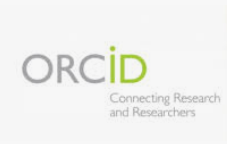Colon lesion diagnosed by colonoscopy in patients with hidden positive blood
Keywords:
hidden positive blood, colonoscopy, colon lesions.Abstract
We carried out an observational, descriptive, cross-sectional study to all the patients with hidden positive blood in fecal feces who were submitted to colonoscopy in the gastroenterology service of the Teaching Clinic-Surgical Hospital Faustino Pérez, of Matanzas, in the period from June 2013 to June 2014; the universe were 104 patients who gave their previous informed consent, and the aim was characterizing the diagnosed lesions. We elaborated a form for collecting information (age, gender, colonoscopy positivity and diagnosed lesions). Results were given in numbers and percents and displayed in tables and pictures. We arrived to the conclusion that there was a predominance of female patients aged 50-55 years; 76,92 % of them had some kind of colon lesions; 15,09 % had colon cancer and 2,83 % rectum cancer, confirming the importance of this testing method for the precocious diagnosis of these pathologies.Downloads
References
2- Notas sobre Gastroenterología Cibernética [Internet]. San Salvador: Clínica de Gastroenterología, c.2014 [citado 3 May 2014]. El cáncer de colon es único porque casi completamente puede ser prevenido a través de un chequeo . Disponible en: http://www.murrasaca.com/nt4.htm
3- Hope RL, Chu G, Hope AH, Newcombe R, Gillespie P, Williams S. Comparison of three feacal occult blood test in the detection of colorectal neoplasia. Gut. 1996; 39(5):722-5. Citado en PubMed; PMID: 9014773.
4- Riemann JF. Colorrectal cancer screening in Europe: compliance and the choice of test. Endoscopy. 2010;42(7):576-7. Citado en PubMed; PMID: 20593335.
5- Ferlay J, Parkin DM, Steliarova-Foucher E. Estimates of cancer incidence and mortality in Europe in 2008. Eur J Cancer. 2010;46(4):765-81. Citado en PubMed; PMID: 20116997.
6- Jemal A, Siegel R, Xu J, Ward E. Cancer statistics, 2010. CA Cancer J Clin.2010;60(5):277-300. Citado en PubMed; PMID: 20610543.
7- Day LW, Walter LC, Velayos F. Colorrectal Cancer Screening and Surveillance in the Elderly Patient. Am J Gastroenterol. 2011; 106:1197-1206. Citado en PubMed; PMID: 21519362.
8- Ministerio de Salud Pública. Dirección Nacional de Registros Médicos y Estadísticas de Salud. Anuario Estadístico de Salud 2010 [Internet]. La Habana: MINSAP; 2011 [citado 3 Jul 2014]. Disponible en: http://files.sld.cu/dne/files/2011/04/anuario-2010-e-sin-graficos1.pdf
9- Lieberman D. Colorrectal cancer screening in primary care. Gastroenterology.2011;132(7):2591-4. Citado en PubMed; PMID: 17570229.
10- Smith RA, Cokkinides V, Brawley OW. Cancer Screening in the United States, 2012. A Review of Current American Cancer Society Guidelines and Current Issues in Cancer Screening. Ca Cancer J Clin. 2012;19. Citado en PubMed; PMID: 22261986.
11- Wang A, Lieberman D. Screening Guidelines for Colorrectal Cancer: What Should We Advocate to Our Patients? Curr Colorrectal Cancer Rep [Internet]. 2010 [citada 3 Jul 2014];6(8). Disponible en: http://link.springer.com/article/10.1007/s11888-009-0036-3#page-1
12- Lieberman D. Progress and Challenges in Colorrectal Cancer Screening and Surveillance. Gastroenterology. 2010;138(6):2115-26. Citado en PubMed; PMID: 20167216.
13- Bretthauer M. Colorrectal cancer screening. J Intern Med [Internet]. 2011 [citado 3 Jul 2014];270(2):87-98. Disponible en: http://onlinelibrary.wiley.com/doi/10.1111/j.1365-2796.2011.02399.x/full
14- Sandler RS. Epidemiology and risk factor for colorectal cancer. Gastroenterol Clin North Am. 1996;25(4):717-35. Citado en PubMed; PMID: 8960889.
15- Nozaki R, Toshiharu S, Norikazu M, Kazutaka Y, Masahiro T. Surveillance interval of endoscopic examinations for colorectal cancer screening. Digestive Endoscopy [Internet]. 2002 [citado 3 Jul 2014];14:1-4. Disponible en: http://onlinelibrary.wiley.com/doi/10.1046/j.1443-1661.2002.00153.x/pdf
16- Iida Y, Munemoto Y, Miura S, Kasahara Y, Saito H, Mitsui T, et al. Clinicopathologic studies of immunologic fecal occult test for colorectal cancer. J Gastroenterol. 1995;30(2):192-200. Citado en PubMed; PMID: 7773350.
Published
How to Cite
Issue
Section
License
All content published in this journal is Open Access, distributed under the terms of the CC BY-NC 4.0 License.
It allows:
- Copy and redistribute published material in any medium or format.
- Adapt the content.
This will be done under the following terms:
- Attribute the authors' credits and indicate whether changes were made, in which case it must be in a reasonable way.
- Non-commercial use.
- Recognize the journal where it is published.
The copyrights of each article are maintained, without restrictions.





